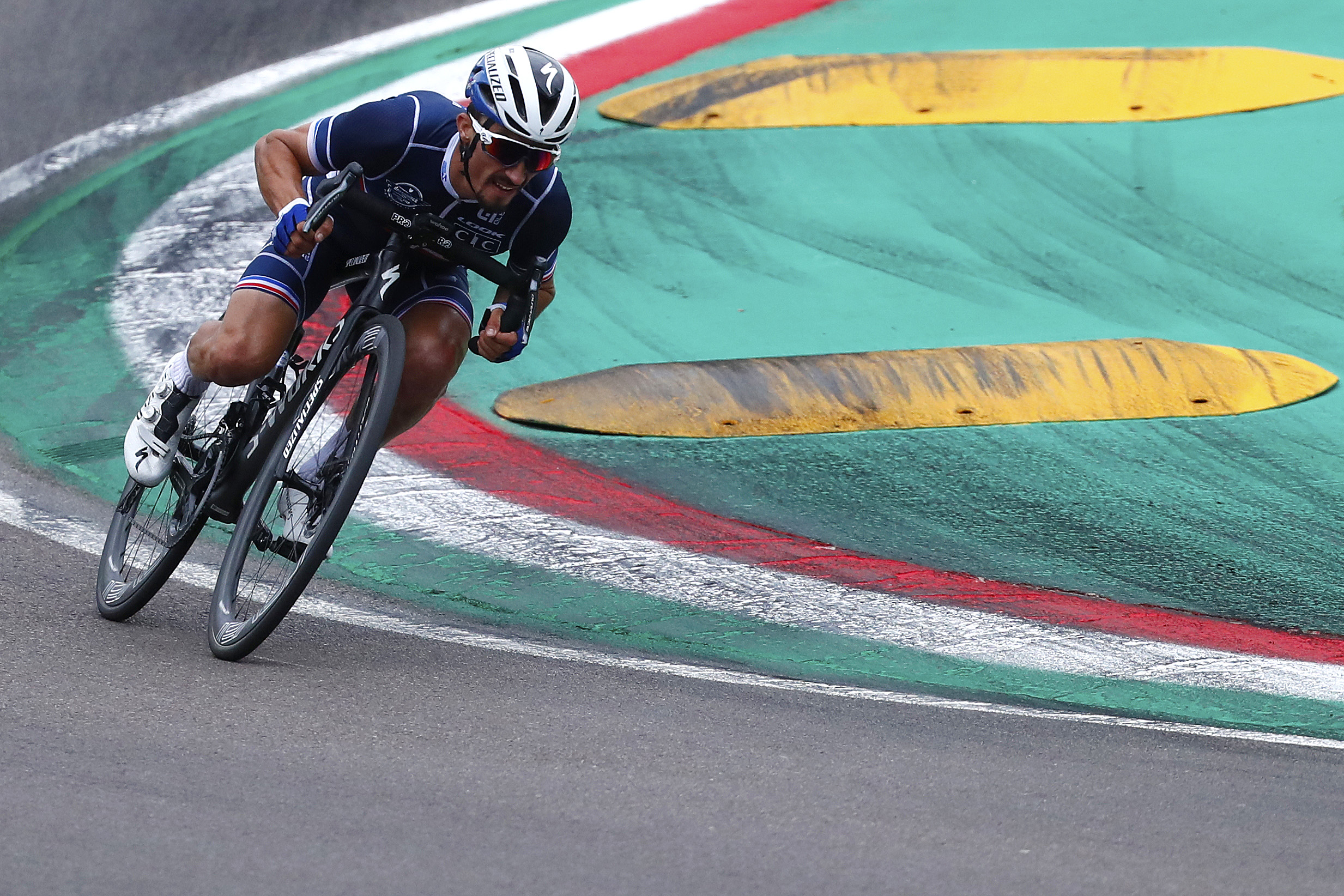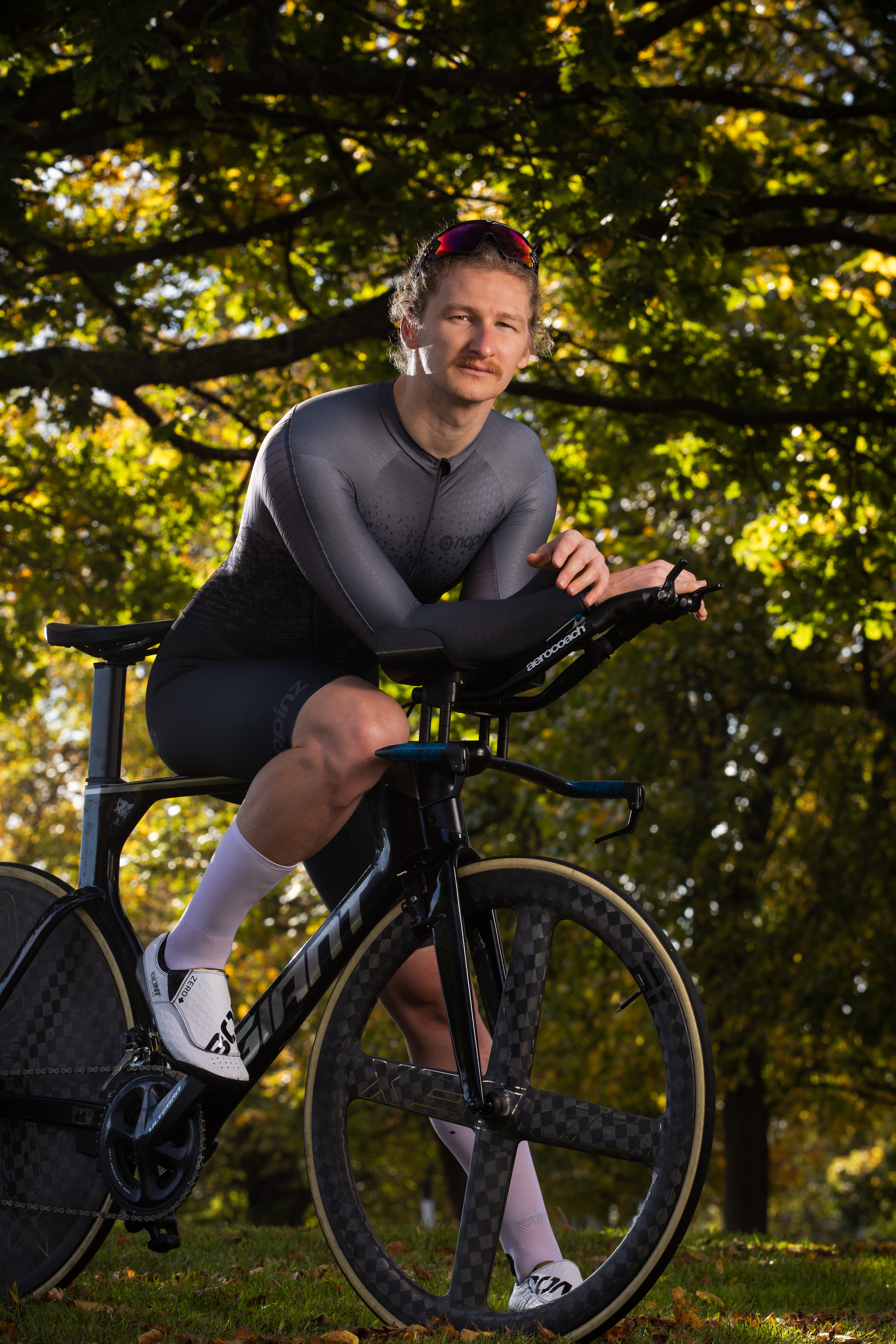‘Dangerous for mortals, less so for professionals’: Readers share their thoughts as UCI bans supertuck and forearms time trial riding position
Here is how Cycling Weekly readers are reacting to the latest UCI rule changes


The decision to ban the supertuck and forearms time trial position in the pro peloton has proved hugely controversial amongst pro riders.
While cycling’s international governing body the UCI said it has made the decision to improve rider safety, a number of professionals have voiced their frustration, suggesting there are bigger issues in cycling the UCI should be addressing.
But the debate is not one-sided amongst the pros, as Israel Start-Up Nation rider Dan Martin suggested the UCI was a right to take a stance on the unorthodox riding positions, used by breakaway riders to gain an aerodynamic advantage over the chasing bunch, rather than waiting for a crash to happen before addressing the issue.
We asked Cycling Weekly readers their thoughts to find out what pro cycling fans think of the bans.
Mark from Devon said the risks involved in pro cycling are part of the job, and that it’s up to the riders to decide how they manage those risks.
The 50-year-old said: “These guys ride bikes for a living. Taking risks is part of their chosen profession.
“They should not be banning these riding positions, before or after any incident. Competitive cycling is a dangerous, even audacious sport and the objective risks should be managed far more closely.
Get The Leadout Newsletter
The latest race content, interviews, features, reviews and expert buying guides, direct to your inbox!
“The subjective risks are what makes the sport unpredictable and exciting. Maybe next they will ban training due to the potential risks and the competitive advantage it gives to those who are good at it.”
Karl from Solihull agrees, saying the sport will suffer if the UCI continues to manage the minute details of cycling.
He said: “Bad decision and smacks of micro management whilst missing the big picture.
“Cycling will be less interesting to watch without these - watching a great descender weave down mountain roads sat on the bar is part of what makes cycle racing interesting and exciting, and both styles likely help the breakaway riders more than the peloton, again making cycle racing more interesting.
“Energies would be better invested elsewhere - ensuring routes are safe and suitable and reacting more quickly to adverse weather and road conditions.”
A number of riders, including André Greipel (Israel Start-Up Nation) have questioned why the UCI is focussing on riding positions rather than more important safety issues in the peloton.
Recently concerns have been raised about dangerous road furniture that features in high-speed sprint finishes, along with the quality of barriers used in races after Fabio Jakobsen's crash in the Tour of Poland.
Riders often use the tucked position to gain an aerodynamic advantage on descents in breakaways or when attacking solo, while breakaway riders regularly ride with their forearms on the handlebars to adopt an improvised time trial position in the attempt to gain a speed advantage over the chasing peloton.
The new rules are set to come into force on April 1, 2021.
But not all cycling fans disagree with the UCI’s decision, with some people concerned that it influences the behaviour of non-professional riders.
Nick Ward said: “Having tried both positions myself it’s clear that the rider has reduced control over the bike’s steering.
“Of the two, the 'puppy arms' is the most dangerous as the rider has no time to react if he loses control, be that by hitting a pothole or other road deformity. If the rider is at the head of a bunch this could lead to a big pile up.
“The aero tuck is ordinarily only used by riders during a descent when the bunch is broken up and while there is some risk to the rider engaged in the tuck, there is limited risk to the peloton so its at the rider's risk.
“Proactive is always better, but more thought on the supertuck aspect and the views of the riders on this particular position is probably worthwhile.”
Another CW reader added: “Supertuck is dangerous for mortals, less so for professionals. I can see why they did it though, because it’s just a matter of time before someone gets properly hurt.
“Forearms rule seems dumb - I use that myself sometimes on solo rides and I’m a non-racing recreational amateur! It offers not only a slight aero difference, but also a chance to change position and relieve a bit of pressure from the wrists. As a pro on a long solo breakaway, why shouldn’t you use it?”
Tom, 36, from the south of England said: “It seems a bit over the top, but can understand the decision considering how it influences non-pros like me.
“Considering all the other hazards pros face, this is not really a serious issue for riders at that skill level and who are riding on closed roads.”
On whether he uses these positions in his own recreational cycling, Tom said: “I did and the only reason, was that I saw the pros doing it on TV and I wanted to be 'cool' like them.
“All I can say, is that if I had never seen it on the telly, then I would never have done it myself. Now I never had an issue with either of the positions, but was I putting myself at extra risk by incorporating these into my riding? Maybe I was, I don't know. Seems likely that an inexperienced amateur riding on open roads would be at far greater risk than a pro when using these techniques though.
“That in itself is probably fair justification regardless of an impact on the pro scene.”

Thank you for reading 20 articles this month* Join now for unlimited access
Enjoy your first month for just £1 / $1 / €1
*Read 5 free articles per month without a subscription

Join now for unlimited access
Try first month for just £1 / $1 / €1
Alex Ballinger is editor of BikeBiz magazine, the leading publication for the UK cycle industry, and is the former digital news editor for CyclingWeekly.com. After gaining experience in local newsrooms, national newspapers and in digital journalism, Alex found his calling in cycling, first as a reporter, then as news editor responsible for Cycling Weekly's online news output, and now as the editor of BikeBiz. Since pro cycling first captured his heart during the 2010 Tour de France (specifically the Contador-Schleck battle) Alex covered three Tours de France, multiple editions of the Tour of Britain, and the World Championships, while both writing and video presenting for Cycling Weekly. He also specialises in fitness writing, often throwing himself into the deep end to help readers improve their own power numbers. Away from the desk, Alex can be found racing time trials, riding BMX and mountain bikes, or exploring off-road on his gravel bike. He’s also an avid gamer, and can usually be found buried in an eclectic selection of books.
-
 'It took everything' - Puck Pieterse outclimbs Demi Vollering to win La Flèche Wallonne
'It took everything' - Puck Pieterse outclimbs Demi Vollering to win La Flèche WallonneDutch 22-year-old shows Classics pedigree with first one-day victory
By Tom Davidson
-
 Tadej Pogačar flies to dominant victory at La Flèche Wallonne
Tadej Pogačar flies to dominant victory at La Flèche WallonneSlovenian takes second win at Belgian classic ahead of Kévin Vauquelin and Tom Pidcock
By Tom Thewlis